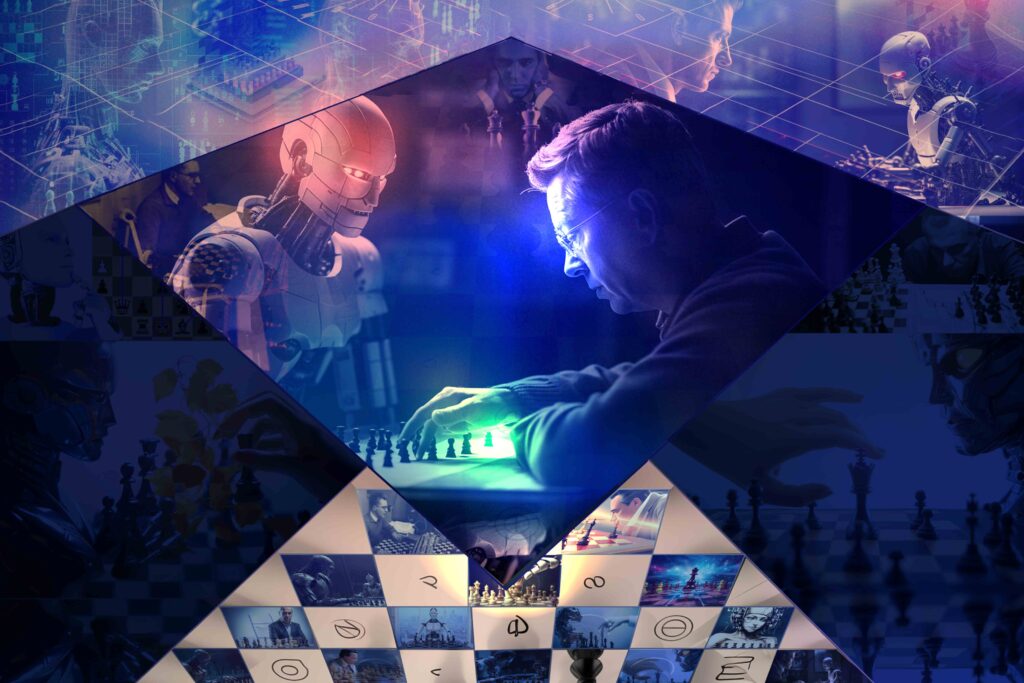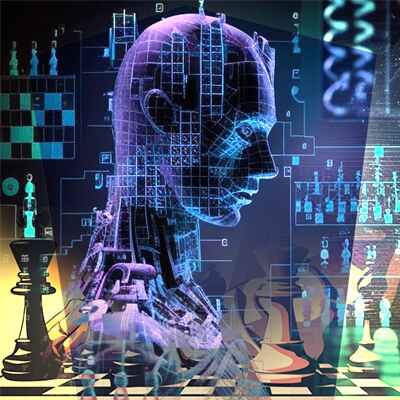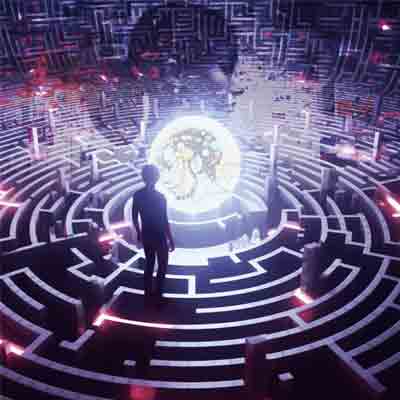Checkmate Continuum: The Evolution of AI Chess Engines
Nov. 23, 2023.
5 min. read.
7 Interactions
This article is available in multiple translations, Click here for a list of options.
✕
Explore the riveting history of chess and AI's intertwined evolution, from Turing's conceptual musings to AlphaZero's creative brilliance. Uncover the strategic dance between human intellect and machine logic.
Chess, with its blend of strategy, foresight, and intellect, has captivated the human competitive spirit for centuries. Its origins trace back to ancient India, meandering through Persia, where it picked up the name ‘Shah Mat’ (‘the King is helpless’). In time, chess won global appeal – with millions worldwide hooked on this mental battleground, kings and pawns dance a strategic pattern towards victory or defeat.
Computation and automated logic machines found a fast companion in chess. The structured, rule-bound universe of chess clicked with the wheels of early computers, and the journey of chess and early AI began, giving birth to what we now know as AI chess engines.
Let’s dive deeper into the intersection between chess and machine, exploring the birth, present, and future of AI chess engines.
The Chessboard Meets the Circuit Board: A Historical Intersection
The tale of chess and computation began before the electronic age. The earliest hint of a chess engine traces back to Alan Turing, the father of modern computer science. Turing conceptualized a theoretical machine that could mimic the cognitive processes of a chess player. Though his ideas remained on paper, they sowed the seeds for a future where chess would become a research area for computational logicians.
Turing’s theoretical musings soon turned into practical applications. In 1951, Ferranti Mark I, the world’s first commercially available general-purpose computer, played a game of chess. Though rudimentary by today’s standards, it birthed computational chess. Chess has always been a vanguard problem for AI. Solving chess was the first step towards AGI, an appealing problem on which to test the foundation circuits of the new neural machines.
In 1997, Garry Kasparov, the reigning world chess champion, found himself battling IBM’s Deep Blue. The encounter was more than a game – it was a showdown between human intellect and machine logic. The world watched as IBM’s Deep Blue triumphed, marking the first time a world champion was defeated by a machine under tournament conditions. Since that defeat, AI dominance in chess was assured. Engines like Stockfish and AlphaZero have ELO that far outstrips even Magnus Carlsen. It’s over – in chess, the machines have won.

Titans of the Chessboard: AI Engines vs Human Grandmasters
Stockfish, an open-source engine, is the zenith of directed evaluation, harnessing the power of extensive opening libraries and endgame tablebases. Its meticulous evaluation of millions of potential future positions brings brute force to back up this cleverness, combining into formidable tactical acumen.
AlphaZero, developed by DeepMind, took a new approach. It learned chess from scratch, with no pre-programmed knowledge apart from the basic rules. By playing astronomical numbers of games against itself, it achieved superhuman performance in a matter of hours, displaying a brand of chess that not only dominated human opponents, but was imbued with creativity once thought to be achievable only by organic neurons.
In a 100-game match, AlphaZero triumphed over Stockfish. This was a significant milestone. The robot-battle was a spectacle, with AlphaZero often choosing less-trodden paths and displaying a proclivity for dynamic, unconventional play.
This is key; AlphaZero’s chess looks nothing like human chess. The neural engine was displaying levels of insight that watching grandmasters have to back-engineer to figure out the logic. The calculation potential of modern machines might mean playing an entirely different game. AlphaZero’s intuitive pattern recognition make it feel ‘smart’. It isn’t some beefy Turing calculator plodding through billions of steps, but a truly ‘thinking’ machine, with insights akin to human eureka.
It hadn’t just ‘solved’ chess with raw processing power. That’s (probably) impossible. In sum, there are more possible moves in chess than atoms in the universe. And that’s if you only account for restricted sets of ‘sensible moves’. By turn one, Black has 900 moves. By turn twenty, it’s for all reasonable purposes already infinite. So far, we, even with immense processing power ‘dumb’ AI like Stockfish, can only calculate so far. That’s why AlphaZero’s pattern recognition is so enthralling, because it feels like our own – just aided and abetted by Stockfish-esque horsepower on top.
So the march of AI in chess doesn’t have to mean obsolescence for human players. Chess has been a standard bearer for AI for decades. Even though we admit our AI agents are better, perhaps there are things we can still learn from each other. Centaur chess is one such exploration, where human players use AI to play tournaments.
Checkmate Future: The Broader Implications of AI in Chess
In the training halls, AI chess engines are transforming the way players prepare and strategize. The ability of machines to simulate scenarios and dissect the implications of positions has become an invaluable tool for players aiming to hone their skills.
The evolution of AI in chess even has ripple effects beyond the game. The principles underlying the success of chess engines find resonance in other domains demanding strategic decision-making and problem-solving. Whether it’s optimizing complex logistics, navigating financial markets, or unraveling the mysteries of molecular structures, the essence of computational logic honed on the chessboard finds applications in many fields. Chess still holds a central place in AI research. Maia is one such example, a chess engine who makes human-like mistakes, and acts as a research platform for human AI interactions and naturalistic engagement in closed systems.
The saga of AI in chess is a microcosm of the larger narrative of AI in human society. It’s a narrative of augmentation, collaboration, and the ceaseless quest for knowledge. The chessboard, once a battleground of kings and queens, now stands as a battleground of men and machines, a symbol of a future where together, they venture into the realms of the unknown, chasing the shadow of perfection.
Let us know your thoughts! Sign up for a Mindplex account now, join our Telegram, or follow us on Twitter.

.png)

.png)


.png)






1 Comments
One thought on “Checkmate Continuum: The Evolution of AI Chess Engines”
"The king is helpless", loved it!
🟨 😴 😡 ❌ 🤮 💩